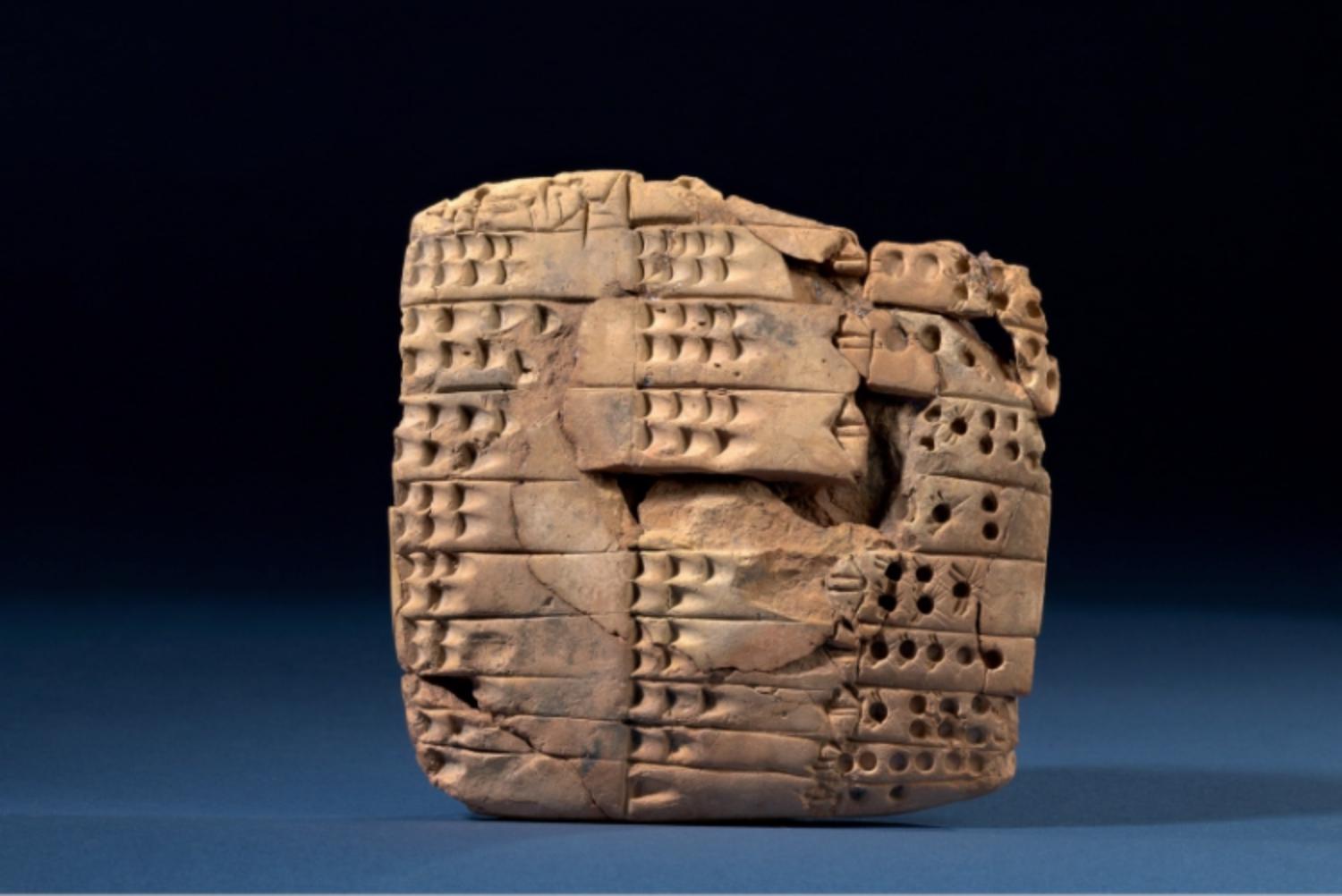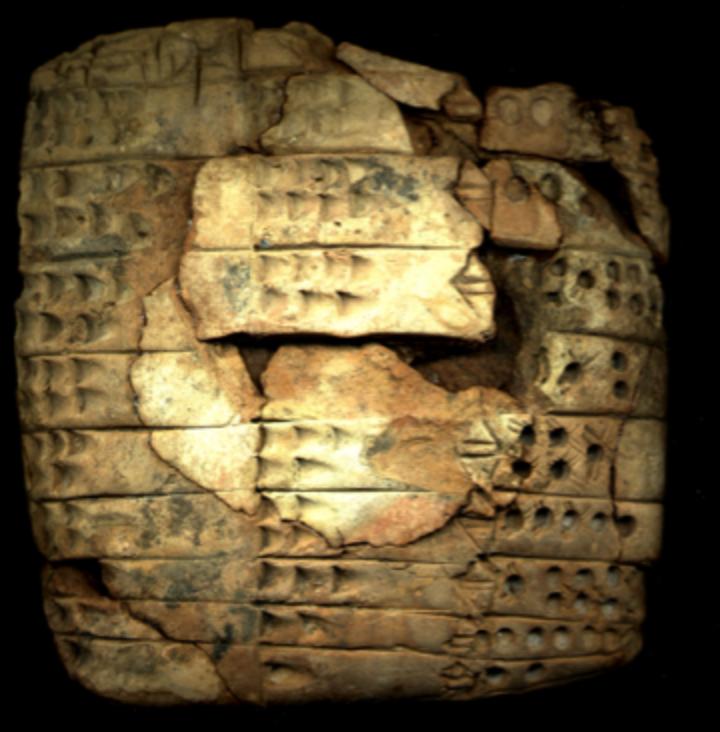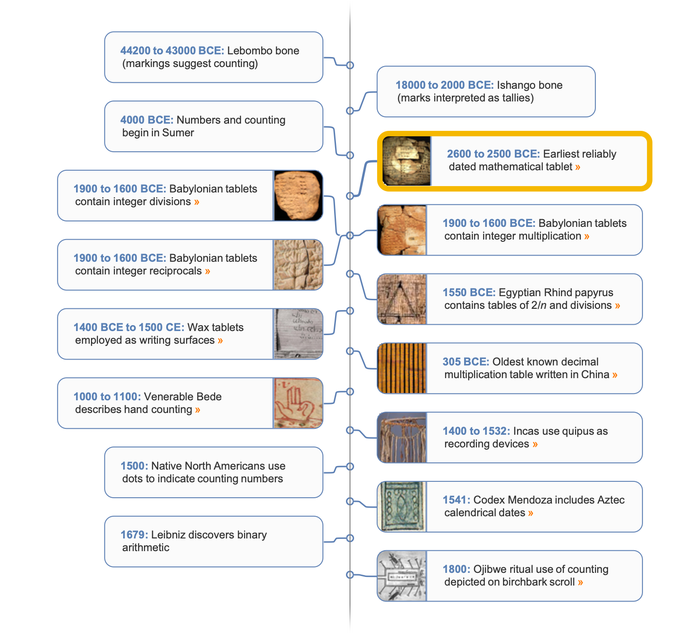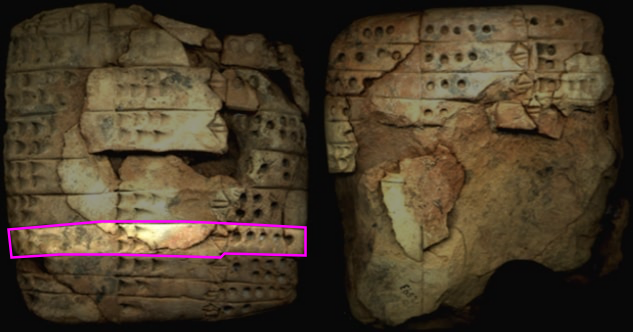around 2600–2500 BCE
Sumerian Earliest Known Math Table
World's oldest reliably dated mathematical table
Sumerian tablet VAT 12593, held by the Vorderasiatisches Museum in Berlin, was created around 2600 BCE, making it the earliest known mathematical table that has been reliably dated.

This tablet was created around 2600 BCE in the Sumerian city of Shuruppak. The first two of a total of three columns give length measurements from 3.6 kilometers to 360 meters in descending units of 360 meters, while the final column gives their products as area measures. The sequence continues on the reverse, and probably ended at 1 rod (~6 meters).








